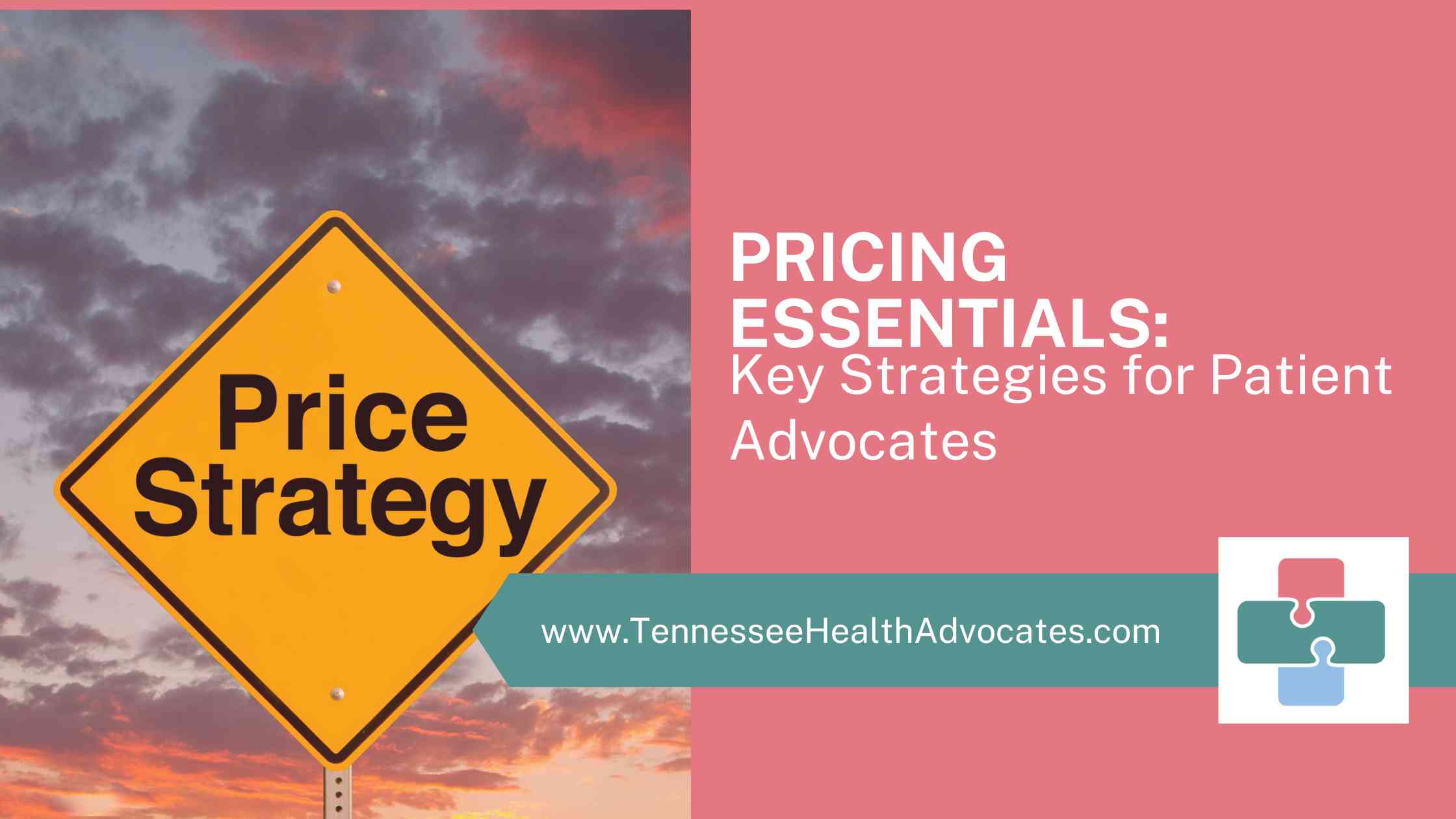A Comprehensive Guide to Boosting Your Patient Advocacy Practice
Pricing strategies for your services effectively can be a game-changer in sustaining and growing your independent patient advocacy practice. Crafting the right pricing strategy involves understanding your unique value proposition, developing a flexible pricing model, and communicating transparency and value to your clients. In today’s blog post, I am jumping into these core areas to help you outline an effective pricing strategy that not only meets your financial goals but also brings greater clarity and satisfaction to your clients.
Understanding Your Unique Value Proposition
A unique value proposition (UVP) is the cornerstone of your business. It sets you apart from other patient advocates and highlights why clients should choose your services over others. Many advocates make the mistake of only listing out the tasks they can accomplish, such as handling medical bills or insurance claims. While these are valuable tasks, they are often similar across different service providers.
Why Your “Why” Matters
To craft a UVP that truly resonates with potential clients, start by diving deep into your “why”—your fundamental reason for doing what you do. Your why is inherently unique and can never be replicated by another advocate. Combine this with your specific skill set and experiences to create a powerful value statement. This step involves a bit of introspection and market research. Study other advocacy services in your area, meet with other professionals, and understand how your experience and skills add a unique layer of value.
Crafting Your Statement
Once you have clarity on your why and your unique skills, craft a clear and concise value statement identifying the unique benefits and outcomes clients can expect from you. Communicate this statement effectively to help clients see your pricing as fair and worthwhile.
Developing a Flexible Pricing Strategy
After understanding your UVP, the next big step is developing a flexible pricing model that aligns with your revenue goals and client needs. There are a few methods you can consider:
Flat Fee vs. Hourly Rates
Flat Fee Services: These are ideal for creating revenue stability, flat fee services allow clients to budget better and provide you with predictable income. For example, you can set a service package at $500 a month and get clients to commit for six months. This method simplifies your billing process and makes it easier to manage your workload.
Hourly Rates: This model offers more flexibility when the time required for tasks varies. However, estimating the hours needed can be challenging, especially when you’re starting out. Clients often prefer more predictable costs, making flat fees a more attractive option for them.
Tiered Pricing
Another effective approach is tiered pricing, where you offer different levels of service at varied pricing. For instance, you could have:
White Glove Service: A premium “done-for-you” service.
Coaching: A hands-on, “done with you” approach.
DIY Option: A low-cost, “do-it-yourself” package.
Pricing Strategy Based on Goals
Determine how many clients you can realistically handle and set a monthly revenue goal. If you need $5,000 a month and can manage ten clients, you’d need to charge $500 per client. Adjust your pricing and client load as needed to meet your financial and workload requirements.
Communicating Value and Transparency
Clear communication is key in helping clients see the value of your services and justifying your prices. This involves not just pitching your services effectively but also maintaining ongoing transparency throughout your engagement.
Creating Estimates and Following Up
For those opting for hourly rates, be sure to create a detailed template that outlines your estimates clearly, offering clients some budget predictability. Develop a structured follow-up system to keep clients informed and engaged. Whether it’s weekly follow-ups for the first month or quarterly check-ins after a year, a consistent communication strategy builds trust and promotes long-term relationships.
Testimonials and Case Studies
Gathering testimonials and case studies from satisfied clients is an invaluable asset in communicating your value. These real-world stories not only validate your claims but also help prospective clients feel more confident in their decision to work with you. Make it a point to ask for testimonials and document successful case studies to showcase during your pitches.
Simplify Your Pitch
Create a streamlined pitch that covers your value proposition, the services you offer, and how you price them. Practice your pitch, refine it based on feedback, and adjust as needed. Consistency in your messaging helps build credibility and trust.
Conclusion
Developing and implementing an effective pricing strategy is critical for the success of your independent patient advocacy practice. By understanding your unique value proposition, creating a flexible pricing model, and effectively communicating your value, you can attract and retain clients while meeting your revenue goals. Remember, pricing strategies are not set in stone. They can and should evolve as your business grows and market conditions change.
Final Thoughts:
I hope this post has provided valuable insights and strategies for you as you seek to find the pricing structure that works best for you and your clients. If you’ve found these tips valuable, check out Managing Expectations. All of my posts are crafted to empower you on your healthcare advocacy journey. Explore and absorb the wisdom shared, and let it fuel your aspirations. In fact, if you want to be the first to get new information and support as an independent patient advocate, join me in The Circle where we meet LIVE on Zoom every week!



